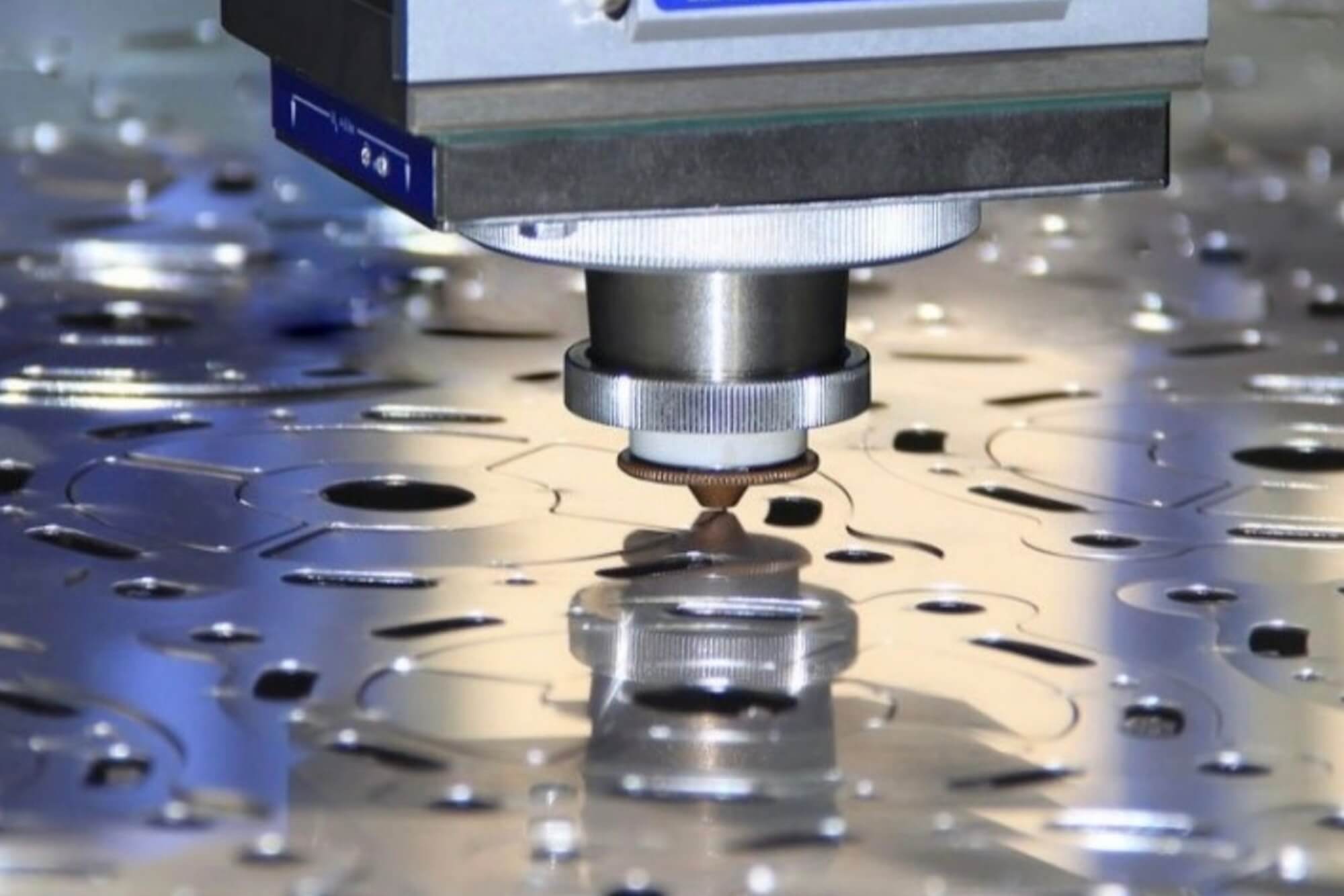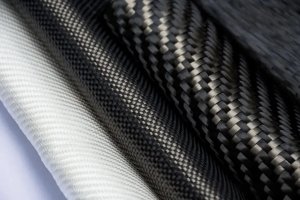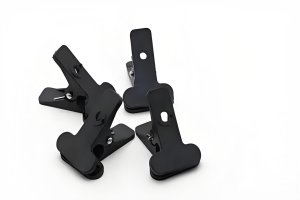Introduction
When I first started working with S30V steel, I thought I knew what I was doing. I had years of CNC machining experience, a decent tool library, and a solid understanding of stainless steels. But S30V? It humbled me.
S30V steel isn’t your average high-end material. It’s aggressive, abrasive, and brutally unforgiving if you don’t treat it with respect. But it’s also one of the best steels you can work with when edge retention, corrosion resistance, and long-term durability are top priorities. That’s why it’s loved by knifemakers, tool fabricators, and high-end gear brands.
This guide isn’t just theory. It’s built on trial, error, and hours spent listening to spindle noise while figuring out why an end mill failed halfway through a roughing pass. Whether you’re a solo maker, a machine shop operator, or just curious how S30V steel and CNC can work together, I’ve laid out everything I wish I had known from the start.
In this guide, I’ll explain:
- Why S30V steel behaves the way it does
- How to prepare your CNC setup for it
- What tools and strategies give the best results
- Real-world lessons from the shop floor
- And answers to questions people in our shoes actually ask
Understanding S30V Steel
What Is S30V Steel?
S30V steel (often labeled CPM S30V) is a premium stainless steel developed by Crucible Industries. It was engineered specifically for knife makers and edge tools, using Crucible’s CPM (Crucible Particle Metallurgy) process. That process ensures an even distribution of vanadium carbides, which are extremely hard and give the steel superior wear resistance.
You’ll find S30V steel in high-end EDC knives, survival tools, tactical blades, and corrosion-resistant components. The very characteristics that make it an elite blade steel—hardness, carbide density, and resistance to deformation—are exactly what make it a challenge to machine.
Composition of S30V Steel
| Element | Percentage (%) | Function |
|---|---|---|
| Carbon (C) | 1.45 | Hardness, edge retention |
| Chromium (Cr) | 14.0 | Corrosion resistance |
| Vanadium (V) | 4.0 | Wear resistance, carbide formation |
| Molybdenum | 2.0 | Strength, corrosion resistance |
| Manganese | 0.50 | Hardenability, strength |
| Silicon | 0.50 | Deoxidizer during manufacturing |
That 4% vanadium is the big deal—it forms vanadium carbides that outperform chromium carbides in wear resistance but also turn S30V steel into a tool killer if you’re not ready.
Why People Choose S30V Steel
I’ve worked with everything from D2 to M390. What makes S30V steel stand out, in my experience, is how well it balances wear resistance and corrosion protection. I’ve had blades made from this steel that held an edge through months of hard field use, and I’ve machined parts for marine applications where rust just wasn’t an option.
It’s more expensive and harder to work with—but if you need something that lasts, S30V steel delivers.
CNC Machinability of S30V
Why It’s Difficult to Machine
Let’s be honest: S30V steel is one of the hardest mainstream steels to machine. The vanadium carbides inside it are so hard, they wear out even top-tier carbide tools fast. And the steel’s tendency to work-harden? It punishes hesitation or poor chip evacuation.
I’ve broken perfectly good end mills by:
- Feeding too slow
- Letting the tool dwell
- Recutting chips
- Using too much radial engagement
The first thing you need to know: S30V steel doesn’t give you second chances.
Comparison with Other Steels
| Steel Type | Hardness (HRC) | Carbide Type | Machinability (1–10) | Notes |
|---|---|---|---|---|
| S30V | 58–61 | Vanadium | 3 | Excellent in performance, harsh to cut |
| D2 | 58–60 | Chromium | 5 | Better chip evacuation |
| M390 | 60–62 | Vanadium + Tungsten | 2 | Even more abrasive |
| 154CM | 58–60 | Chromium | 6 | Balanced choice |
| 440C | 57–59 | Chromium | 7 | Easy to machine |
Heat Treatment Considerations
My rule: always machine S30V steel in the annealed state if you can. Annealed S30V is still tough, but manageable. If you’re machining it hardened (above 58 HRC), limit your work to finishing passes or engraving—and double your coolant flow.
If you’re doing your own heat treatment:
- Leave 0.005″–0.010″ for post-HT grinding
- Expect some warping
- Be precise with your soak and quench
Preparing for CNC Machining
Equipment Matters
Your machine has to be rigid and powerful enough to handle the cutting forces S30V steel demands. I’ve tried machining it on a lightweight VMC, and while possible, the chatter and tool life issues were frustrating. Once I moved to a higher-horsepower spindle and reinforced fixturing, results improved dramatically.
| Machine Feature | Minimum Spec | Recommended |
|---|---|---|
| Spindle HP | 5+ HP | 7.5–10 HP |
| RPM Range | 6000+ | 10,000+ |
| Coolant System | Flood or high-pressure mist | Flood with additive |
| Control Precision | ±0.005 mm | ±0.002 mm |
| Table Rigidity | Cast-iron, solid mounting | Heavy-duty preferred |
CAM Software and Toolpath Strategy
I use Fusion 360 for design and programming. Its adaptive clearing is great for this kind of material. Here’s what I’ve learned:
- Adaptive Toolpaths: Constant engagement = better tool life
- Avoid Plunging: Always ramp in or helical enter
- Leave Finishing Stock: At least 0.005″ for final pass
- Avoid Retracts: Keep the tool in contact as long as possible
I simulate everything—every pass, every tool change. One missed retract or poor ramp-in can cost you a $60 cutter.
Setup Tips
Before any job on S30V steel, I run this checklist:
- Tooling is sharp and coated (preferably AlTiN or TiSiN)
- Material is clamped solid, no flex
- Coolant is fresh and full-pressure
- Speeds/feeds are tuned for engagement depth
- Dry-run has confirmed toolpaths are clean
Tooling and Cutting Parameters
The Right Tools Make All the Difference
If there’s one thing I’ve learned while machining S30V steel, it’s that tooling matters more than almost anything else. Using the wrong tool—even a good tool with the wrong coating—can wreck your part, ruin your tool, and waste your day. I’ve done it. More than once.
S30V steel demands high-performance carbide tools with advanced coatings. In my shop, I’ve had the best luck with AlTiN-coated end mills, and in some finishing cases, PCD tools (though they’re expensive). For the average shop, AlTiN is your best bet.
Here’s a comparison of real-world tool performance I’ve tracked:
| Tool Type & Brand | Coating | Application | Avg. Tool Life (inches cut) | Comments |
|---|---|---|---|---|
| Harvey Tool Carbide | AlTiN | Rough milling | 45–60 | Solid performer |
| Helical Solutions | AlTiN | Profiling & slotting | 50–75 | Great with mist coolant |
| Kennametal High-Performance | TiSiN | Heavy roughing | 60–90 | Very consistent |
| No-name import | TiN | General milling | 10–15 | Failed quickly, avoid |
| Harvey Tool PCD ball-end | None (PCD) | Finishing only | 100–150 | Best finish, very costly |
Feeds, Speeds, and DOC for S30V Steel
Here’s where things get real. These parameters are based on actual runs I’ve done on annealed S30V steel using a 7.5HP vertical CNC mill, flood coolant, and rigid fixturing. Always test first with your setup.
| Operation | Tool Ø | Coating | RPM | Feed (IPM) | DOC (Axial) | Step Over | Notes |
|---|---|---|---|---|---|---|---|
| Adaptive Roughing | 1/4″ | AlTiN | 3200 | 10 | 0.020″ | 15% D | Use ramp entry, avoid dwell |
| Slot Milling | 1/8″ | AlTiN | 5000 | 6 | 0.010″ | 100% | Helix into cut, keep moving |
| Finish Profiling | 3/8″ | AlTiN | 2500 | 8 | 0.010″ | 5% | One-pass, light climb cut |
| Chamfering | 1/4″ | TiSiN | 4000 | 4 | Light | 0.010″ | Slow and steady |
| Engraving (PCD) | 1/16″ | N/A | 8000 | 2 | Shallow | N/A | Hardened S30V only |
Some general tips:
- Higher surface speeds = more heat, and S30V doesn’t like heat
- Never let the tool “rub” or dwell—keep feed constant
- Use constant engagement strategies (adaptive, trochoidal)
- Chip evacuation matters: clogged flutes = friction = tool failure
Coolant & Lubrication
I’ve tested several fluids. The best results came from:
- Water-soluble synthetic coolant with high-pressure flood
- Occasionally mist coolant with air blast for engraving or finishing
Avoid dry machining unless you’re 100% confident in your tooling, workholding, and strategy.
Drill Bits and Threading Tools
Drilling S30V is a pain if you use general-purpose tools. I recommend:
- Solid carbide drills with TiAlN coating
- Peck drilling in short bursts
- Slower feed and higher coolant pressure
Threading is best done with thread milling, not taps. Taps break. Ask me how I know.
Practical Techniques and Tips
Workholding: Get It Locked Down
S30V steel fights back. Literally. Even if it’s not hardened, the density and rigidity of the material create high cutting forces. That means your fixture setup can’t flex or slip.
I’ve found the best results with:
- Precision vises with custom soft jaws
- Deep material bite (0.125″+)
- Parallels and stop blocks for repeatability
- Machined vacuum plates for large flat parts
If the material moves mid-cut, not only do you ruin the part—you risk shattering the tool.
Toolpath Tactics That Work
Toolpath design is your defense against everything S30V steel throws at you.
My go-to strategies:
- Adaptive clearing for all roughing
- Slow spiral ramps into pockets
- High-feed linking to reduce lift time
- Finish passes at half depth and reduced speed
- Keep radial engagement low: 10–15% is sweet spot
Fusion 360’s toolpath simulations have saved me hours. I check for red zones (high tool load) and adjust feed override when needed.
Surface Finishing Tricks
S30V steel doesn’t just cut rough—it wants to leave a rough finish if you let it.
What works for better finish:
- Climb milling only
- Final pass with a fresh cutter, light DOC, minimal stepover
- Using air blast to clear chips
- Post-process polishing with Scotch-Brite or ceramic belts
In some knife projects, I’ve hand-finished the bevel after CNC profiling. S30V responds well to high-grit sanding after machining, especially if cut cool.
Mistakes I’ve Made (So You Don’t Have To)
- I reused a slightly dull cutter: it chipped halfway through
- I forgot to check coolant flow: overheated the tool, ruined the surface
- I skipped a finish pass: customer noticed the tool marks instantly
- I over-clamped and warped the stock: ruined part dimensions
Machining S30V steel is rewarding—but it’s not a material that lets you coast. Every detail matters.
Real-World Case Study
Background: Custom Knifemaking with S30V Steel
A couple years ago, I took on a batch job for a small batch of high-end folding knives using S30V steel for the blades. The client wanted tight tolerances, a satin finish, and laser-engraved logos. At that time, I’d worked with D2 and 154CM before, but this was my first real volume project with S30V steel.
The batch was small—just 20 pieces—but the expectations were high.
Setup Overview
- Material: CPM S30V steel, 3/16″ thick bar stock, annealed
- Machine: Tormach 1100M with upgraded 770 spindle (10,000 RPM)
- Tooling:
- Helical Solutions 1/4” 3-flute AlTiN end mill
- Lakeshore Carbide 1/8” ball end for bevel finishing
- Harvey Tool chamfer mill for spine cleanup
- Coolant: Flood, synthetic-based
The material came annealed to ~28–30 HRC. Still tough, but manageable.
What Went Right
- Adaptive roughing with shallow stepover preserved tool life
- Finish pass strategy (low feed, low DOC) gave mirror edges on bevels
- Engraving with a micro-engraving tool at 8,000 RPM created a clean mark, even post-heat-treat
- Post-processing (belt sanding) on bevels after heat treatment resulted in a premium finish
One of the biggest wins was switching to a ramp-in toolpath over plunge. That single change improved tool life by about 22%, based on my rough tracking across the 20 parts.
Challenges I Faced
- Chip evacuation was tough in deeper pockets. I had to stop and manually air-blast between passes.
- One batch of end mills dulled early—turned out I forgot to re-check coolant concentration.
- I underestimated warping during heat treatment. I had to surface grind all 20 blades after.
Client Feedback
The customer was thrilled. They noted that the S30V steel blades held a better edge over their older D2 models and showed zero corrosion after months of carry. We’ve since done two more follow-up runs.
For me, the real win was learning how much better tool life and finish got when I stopped treating S30V steel like a typical stainless. It’s not forgiving—but it’s worth it.
Safety and Maintenance
Safety Considerations When Machining S30V Steel
Machining S30V steel introduces unique risks that shops should prepare for. The material’s hardness and heat generation mean both tool failure and chip ejection are more dangerous than usual.
Here are safety steps I never skip:
- Always use full chip guarding: S30V chips come off hot and sharp
- Wear a face shield for manual chip clearing (if needed)
- Never open the door until spindle stops—carbide fragments can be unpredictable
- Use coolant-safe gloves when cleaning fixturing or chips
Tool Maintenance Tips
Keeping tooling in shape for S30V steel isn’t just a good idea—it’s mandatory if you want consistency and cost control.
Here’s my typical routine for every S30V job:
- Inspect tools after every 3–5 parts
- Sharpen end mills at ~30% wear, not when dull
- Log inches of cut per tool for future estimates
- Reapply anti-stick coating on soft jaws to prevent galling
Machine Maintenance
S30V steel machining creates more fine metallic dust and wear debris than softer steels. I recommend:
- Cleaning coolant tank every 2–3 weeks during extended runs
- Replacing mist/flood coolant filters regularly
- Lubricating Z-axis more often due to vibration from hard passes
Summary and Recommendations
Working with S30V steel has pushed me harder than any other material. It’s not easy, but it’s worth it.
Here’s what I recommend if you’re planning to start machining S30V steel:
Key Takeaways
- Start with annealed S30V, not hardened stock
- Use AlTiN- or TiSiN-coated carbide tools—don’t compromise
- High-pressure coolant and rigid fixturing are must-haves
- Use adaptive toolpaths, low stepover, consistent feeds
- Always simulate toolpaths and use finishing passes
When Is S30V Worth It?
Choose S30V steel if your application demands:
- Exceptional edge retention
- Corrosion resistance
- Long-term durability under wear
Don’t choose it if:
- You lack rigid equipment
- You’re trying to run a tight tooling budget
- Surface finish isn’t a top concern
For knife blades, outdoor tools, marine parts, and precision instruments, S30V steel remains one of the top options available—and once you get the workflow down, it rewards you with outstanding performance and long-term customer satisfaction.
FAQ
1. What is S30V steel used for?
S30V steel is primarily used for high-performance knife blades, tactical tools, and corrosion-resistant mechanical components. Its wear resistance and edge retention make it a top choice for custom knifemakers and manufacturers alike.
2. Is S30V steel hard to machine with CNC?
Yes, S30V steel is very difficult to machine due to its high vanadium carbide content. These carbides are extremely abrasive and can wear down cutting tools quickly if not managed correctly.
3. What kind of tools should I use to cut S30V steel?
You should use AlTiN- or TiSiN-coated carbide tools when machining S30V steel. Standard HSS or uncoated carbide tools will not hold up under the abrasive conditions of S30V.
4. Can I machine hardened S30V steel?
It’s possible to machine hardened S30V steel, but only with rigid equipment, high-end tooling, and limited passes. Most shops choose to machine it in its annealed state and heat treat afterward.
5. What is the best feed rate for S30V steel?
Feed rates vary, but a good starting point for S30V steel is 5–12 IPM with a 1/4” end mill, depending on your spindle speed and depth of cut. Always simulate and test.
6. How does S30V steel compare to D2 steel in machining?
S30V steel is harder to machine than D2 due to vanadium carbides. D2 has better machinability but offers less corrosion resistance and edge retention than S30V steel.
7. What kind of coolant works best for S30V steel?
Flood coolant with a water-soluble synthetic base works best for S30V steel. It helps with chip evacuation, temperature control, and extending tool life.
8. Can S30V steel be engraved using CNC?
Yes, S30V steel can be engraved, especially after heat treatment. For best results, use micro carbide engraving tools or PCD tools at high RPM.
9. How long do cutting tools last when machining S30V steel?
Tool life depends on parameters, but high-quality coated carbide tools typically last for 40–90 inches of cutting per tool on S30V steel before needing replacement or sharpening.
10. Is S30V steel better than M390 for CNC machining?
No. While both are high-performance steels, M390 is even harder and more wear-resistant than S30V steel, but also more difficult to machine. S30V offers a better balance between performance and machinability.
11. Can I use a desktop CNC to machine S30V steel?
It’s not recommended. Desktop CNCs usually lack the rigidity and horsepower needed to handle S30V steel efficiently. You’ll likely damage tools or ruin parts.
12. Is S30V steel corrosion resistant?
Yes. S30V steel is highly corrosion resistant, making it suitable for outdoor, marine, and tactical applications.
13. Can I drill holes in S30V steel?
Yes, but only with solid carbide or cobalt drills. You’ll need to peck drill with high coolant pressure and slow feed rates to avoid overheating or snapping the bit.
14. What is the best way to finish S30V steel surfaces?
The best way to finish S30V steel is to use a light finishing pass with a sharp cutter, followed by sanding, buffing, or ceramic belt finishing, depending on your aesthetic and tolerance goals.
15. Does S30V steel require special fixturing?
Yes. S30V steel requires rigid, secure fixturing to avoid vibration and shifting under high cutting loads. Custom soft jaws and high clamping pressure are recommended.
16. What is the ideal depth of cut for milling S30V steel?
For 1/4” tools, keep your axial depth of cut between 0.010” to 0.020”. Use light radial engagement and adaptive toolpaths to avoid tool overload.
17. Should I polish S30V steel after machining?
Yes. S30V steel often benefits from post-machining polishing, especially in knives or visible parts. It responds well to belt finishing and fine abrasive polishing.
18. Why do tools break when cutting S30V steel?
Tools often break due to heat buildup, work hardening, dull edges, or poor chip evacuation. Always use sharp tools, optimized feeds/speeds, and constant engagement toolpaths when cutting S30V steel.
Further Reading & References
- Wikipedia: CPM S30V Steel
This comprehensive article details the development, composition, and applications of CPM S30V steel, highlighting its unique properties and usage in cutlery.
https://en.wikipedia.org/wiki/CPM_S30V_steel - Hudson Tool Steel: CPM S30V Data Sheet
This technical data sheet provides in-depth information on the chemical composition, mechanical properties, and machining guidelines for CPM S30V steel.
https://www.hudsontoolsteel.com/technical-data/steelCPMS30V - Knife Steel Nerds: S30V Steel – History and Properties
An analytical piece that delves into the metallurgical aspects, development history, and performance characteristics of S30V steel.
https://knifesteelnerds.com/2020/04/13/s30v-steel-history-and-properties/ - ZKnives: Crucible CPM S30V Knife Steel Composition Analysis
This resource offers a detailed breakdown of S30V’s chemical composition and compares its properties with other knife steels.
https://zknives.com/knives/steels/cpm_s30v.shtml - Knife Know-It-All: S30V Steel – Review, Blade Performance & Composition
An informative review focusing on the performance, corrosion resistance, and suitability of S30V steel in various applications.
https://knifeknowitall.com/s30v-steel-review-blade-performance-composition/ - Wikipedia: Machinability
This article explains the concept of machinability, factors affecting it, and its relevance to materials like S30V steel.
https://en.wikipedia.org/wiki/Machinability
Other Articles You Might Enjoy
- Galvanized Square Steel and CNC Machining: The Ultimate Guide
Introduction If you're involved in construction, metal fabrication, or precision machining like me, you've probably encountered galvanized square steel. Galvanized square steel is popular due to its strength, corrosion resistance, and…
- Comprehensive Guide to CNC Machining: Carbon Steel vs Stainless Steel
Choosing the right material for CNC machining is a crucial decision for any manufacturer or engineer. Two of the most commonly used materials in various industries are carbon steel and…
- Precision Meets Performance: A Comprehensive Guide to CNC Machining of M390 Steel
Introduction When I first encountered M390 steel, I wasn't aware of the challenges and possibilities this remarkable metal offered. My experience began in a CNC workshop, facing persistent tool wear and…
- What Makes 1095 Steel Ideal (or Not) for CNC Projects
Introduction Choosing the right material for CNC machining can make or break your project. It’s not just about whether a material is hard or tough. It’s about how it behaves…
- Cold Rolled Steel Machining Explained: From Material Choice to Cutting Strategy
Introduction When I first got into CNC machining, I didn’t pay much attention to material types. I just followed blueprints, mounted the blocks, and let the machine do its thing.…
- Stainless Steel Fasteners: What Designers and CNC Machinists Must Know
Why Stainless Steel Fasteners Matter in CNC Applications As someone who has spent significant time around CNC machines and designing mechanical assemblies, I've learned one critical truth: the smallest parts…
- Custom Stainless Steel Screws with CNC Machining: Techniques, Tools, and Tips
Introduction I first realized how crucial Stainless Steel Screws are in CNC machining projects when I worked on a small manufacturing assignment.We needed durable, corrosion-resistant fasteners for an outdoor piece of equipment,…
- 18/8 Stainless Steel Machining Guide: Everything You Need to Know
I. Introduction If you've worked with stainless steel before, you've probably come across the term 18/8 stainless steel. It's one of the most common stainless alloys used in CNC machining—and for…






